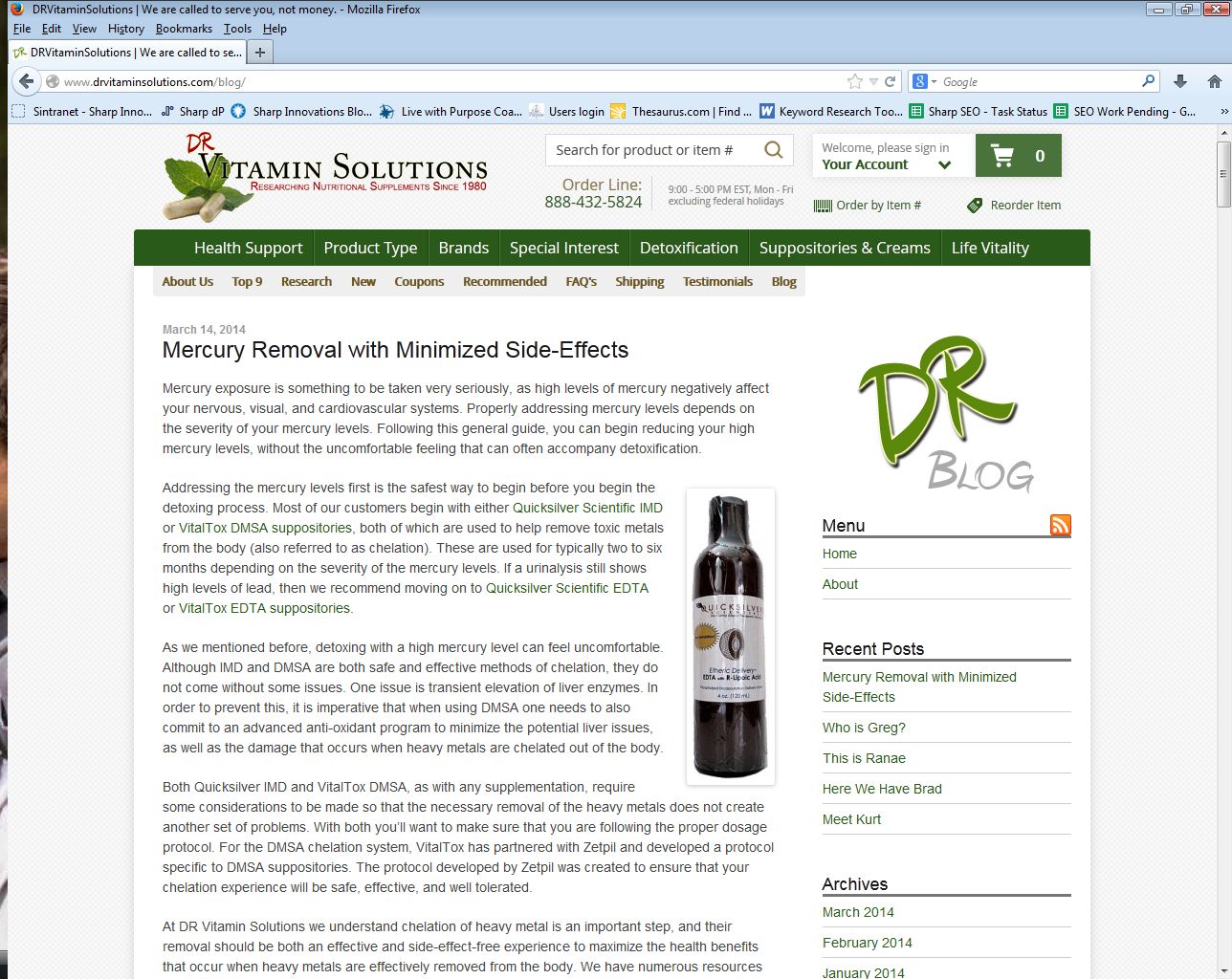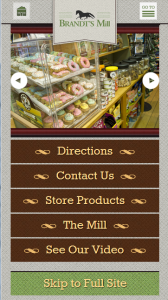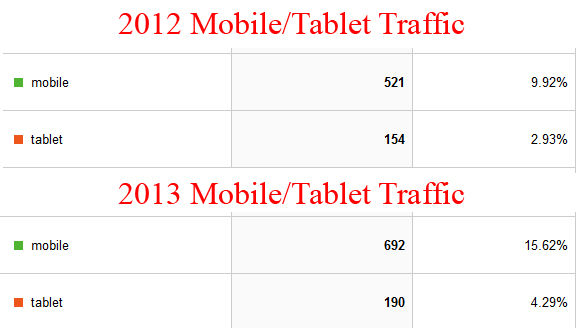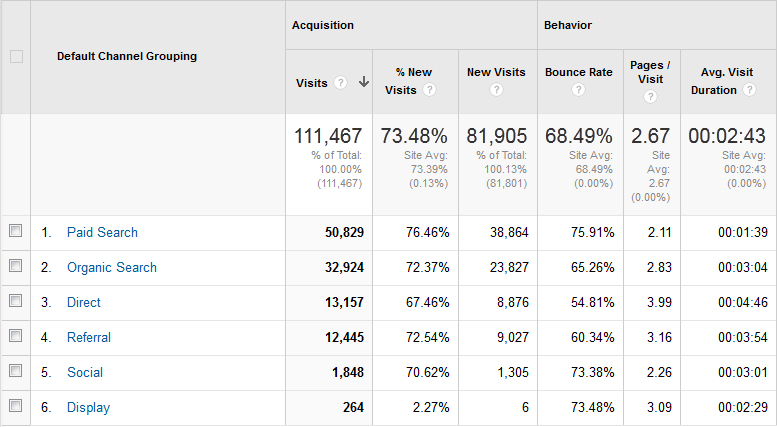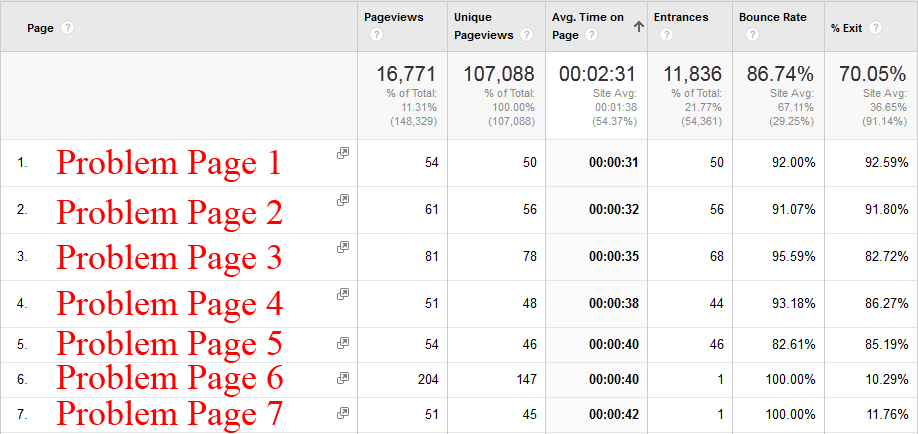Sharp Innovations Blog
Quality Content: Important for Humans and Robots Alike
July 25, 2014It’s been said before, but content is still king when it comes to website visitor engagement and proper search engine optimization. No amount of flashy visuals, distracting animation, or trendy designs can save you from frequent page bounces if visitors to your site don’t find meaningful content. But that’s assuming you get visitors in the first place, which is largely determined by how you rank in search engines (hint: search engines are looking for good content, too).
A Social Life is a Good Life
July 10, 2014Social media has become such a hot topic among web marketers, and for good reason! These sites easily allow users to keep in touch with friends and family, as well as share things they care about or enjoy. And there is the key to the whole thing, sharing. Sharing can take a website that is barely known, and because one share, garner extremely favorable notoriety. But advertising does the same thing right? Yes, but when your friend shares a link with you, it feels more personal, like your friend is specifically endorsing that site.
IMAP, POP, SSL, Oh My!
June 9, 2014 E-mail is one of the most common forms of business communication available today, but it can also be one of the most complex. With the recent explosion of mobile devices, in particular, ensuring you have a fully synchronized experience across all of your devices has become more important than ever. IMAP, POP3, SSL, ports… these technologies are all things that can make e-mail seem difficult to understand, much less manage. But one of the most common issues we find involves e-mail accounts being set up as POP3, rather than IMAP. It is very easy to confuse the two, and they are often misunderstood. Essentially, they are both ways of communicating with the mail server, but each serves a different purpose.
E-mail is one of the most common forms of business communication available today, but it can also be one of the most complex. With the recent explosion of mobile devices, in particular, ensuring you have a fully synchronized experience across all of your devices has become more important than ever. IMAP, POP3, SSL, ports… these technologies are all things that can make e-mail seem difficult to understand, much less manage. But one of the most common issues we find involves e-mail accounts being set up as POP3, rather than IMAP. It is very easy to confuse the two, and they are often misunderstood. Essentially, they are both ways of communicating with the mail server, but each serves a different purpose.
Top 10 Things to Look for in a Web Development Firm
May 15, 2014Gone are the days of placing an ad in the Yellow Pages or going door-to-door to ask your neighbors for business. Today, when people need a product or service, the Internet is their first stop, bar none. But it’s no longer sufficient to just be present online. These days, your potential customers expect your web presence to look great, load quickly, function intuitively, and provide them with whatever information or resources they might be seeking.
Understandably, finding a firm to help you meet these expectations can feel a bit overwhelming. Fortunately, our experience building and marketing websites for hundreds of clients in dozens of industries has given us some unique insights into what criteria are most important in a web development partner. Following are the top 10 questions you should ask when entering into a new partnership, to not only aid you in getting the ball rolling, but to also give you a better understanding of what kind of relationship you are forming.
Are You Planning to Fail?
April 2, 2014If there is one constant in the website development business, it is that there will always be change. And as things change, your business strategy needs to adjust accordingly to maximize effectiveness and avoid being put into a competitive disadvantage. With a modicum of planning, businesses can use these technology changes and market shifts to their advantage. Conversely, companies that don’t do this end-up lagging further and further behind.
The Importance of being earnest (in keeping your online presence current!)
March 25, 2014Poet and playwright Oscar Wilde may have had some fun with Victorian social conventions in “The Importance of Being Earnest,” but he likely never could have imagined the importance of being earnest about your online presence. Indeed, your online existence says everything many of your potential customers will ever know about your business or organization. That’s why it’s critical to keep both your website and your social media pages up-to-date, in both messaging and design. An appealing look and feel combined with interesting or compelling content will communicate professionalism, capability and relevancy to those searching for a business or organization like yours.
“Themes” replacing “Keywords” as king of Search Engine Optimization
March 19, 2014As any good search engine optimization specialist knows, there are no constants when it comes to achieving good rankings in search engine results pages (SERPs). Staying abreast of industry trends and adjusting to the ever-evolving algorithms used by Google and others is a core part of the SEO services provided by Sharp Innovations.
Themes, Topics and Concepts
One of the latest SEO trends is the migration away from “keywords” or phrases to more robust topics or themes. The traditional focus on single keywords has evolved into thinking about a more holistic message, with Google (in particular) rewarding a page with a consistent theme over a page that is simply loaded with repetitions of a single keyword.
“…we need to be focusing on what the user is looking for rather than specifically all of the ways they can phrase it.” Kate Morris – The Moz Blog
As Google continues to adjust their search algorithm, they’ve recently implemented a new query model which focuses on context versus specific words alone. This, in turn, rewards a page that is optimized with broader themes and topics in mind. This model is more focused on determining what the user is actually looking for, versus simply matching exact keyword phrases that may or may not be relevant. Which, of course, is in keeping with Google’s mission of providing the best search experience possible. With this in mind, a themed page would need to consider both the explicit and implicit facets of a search, or what the user may be searching for coupled with where they are and with what device they are searching from. For example:
Lancaster Antique shops (explicit)
+
Smartphone user, on street in Lancaster (implicit)
When optimizing a page, both the explicit and implicit search queries must be factored into the page theme or topic. In other words, the context in which a user is searching is often just as important as the topic for which they are searching.
Hummingbird
We mentioned earlier that Google frequently changes its search algorithm (by some estimates, a dozen or more times per year). Indeed, Google recently rolled out an update called “Hummingbird,” which, adjusted its way of determining relevancy in a search. This adds support to the idea that themed pages focusing on topics and concepts may be viewed more favorably by engines than specific keyword targets. To read more about Google Hummingbird, check out our previous post on this update.
More fluid content and better optimization
It will come as a relief to both website content editors and their clients to know that they are no longer required to awkwardly jam web pages with keywords in order to climb the SERP ranks. Taking into account the context with which a user is searching, web content authors can develop topics and themes that are attentive to the user’s context and reason for searching. This should result in cleaner content and better rankings!
For example, in the content shown below, the phrase “time management” does not need to be stuffed into the page several times for proper optimization, as was attempted in the past. In fact, the preferred method is to write about the topic more naturally, which creates several words and phrases associated with the “time management” theme:
Sharp Innovations offers a complete suite of SEO services, from on and off-page organic optimization to comprehensive social media and blogging packages, and much more. Feel free to reach out and learn how we can help you navigate the ever-changing search engine waters.
Responsive Web Design Vs. Mobile Web Design
March 7, 2014According to the Pew Internet and American Life Project, 91% of all American adults have a cell phone, and 58% have a smartphone. If you’re wondering whether or not now is the right time to be thinking about a mobile-friendly version of your website, the answer for most businesses is that you shouldn’t just be thinking about it, you should already have one. The real question for most businesses is what type of mobile site is appropriate? There are basically two types.
What is Responsive Web Design?
A “responsive” website is one that seeks to provide easy reading and navigation while minimizing resizing, scrolling and left/right panning motions. It does this by dynamically moving and re-sizing parts of your website to allow for proper display and ease of use, regardless of device. Depending on your device’s size, the website may scale and shift pieces in different ways. It does this by using proportion-based grids, resizable images and various media queries. Since the only things that change are behind-the-scenes pieces of code, you don’t need a different domain name for the mobile version (such as “m.examplesite.com” or “mobi.examplesite.com”). Small, medium or large—it’s the same website for every size screen.
The responsive design example below shows you three different ways our Sharp Innovations website displays, depending on whether you are on a desktop (A), a tablet (B), or phone (C).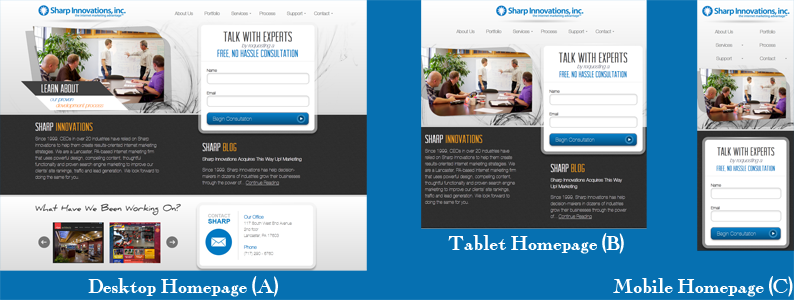
What about Mobile Web Design?
A mobile website is a version of your website specifically optimized for mobile devices, which often includes a unique look built for a specific size. The emphasis here is on removing unnecessary distractions and focusing only on the things that a mobile user is likely to care about most. The problem with a mobile-specific design is that it will be built to a specific screen size or resolution, which has become problematic as new devices continue to be introduced with differences in screen sizes, pixel count, format, etc. In addition, a mobile site must typically reside at an “m.” or “mobi.” address, which creates a second site for search engines to index. If not done properly, this can lead to duplicate content issues.
On the plus side, a mobile site can be built to address very specific needs and user interaction preferences for mobile users in completely custom ways, which can reduce costs. Brandt’s Mill, a Sharp Innovations client, had us build a mobile-friendly site for them, as shown below.
Which should we choose for our website?
Both responsive and mobile website design fulfill the role of providing a more user-friendly experience for mobile and tablet visitors. Your specific need will likely determine which route you choose.
A responsive website is Google’s preferred option, so if you’re concerned with obtaining the best possible rankings, this is probably your best bet. In addition, you won’t need to make updates to both the mobile and desktop versions of your website separately, as any change you make on a responsive site is universal and will show-up on all devices. As mentioned before, you also won’t need to setup a separate domain for mobile traffic, so there’s no need for an m.examplessite.com, or similar.
However, if your website is already built and is non-responsive, you may choose a dedicated mobile site to save the effort of a full site redesign and associated costs. Since a dedicated mobile website is specifically built for mobile devices, it may also reduce load times by using smaller images and less content.
In general, if you are having a new website built, we recommend going the responsive route. That’s why we do this for every new website we build as a standard feature. If, however, you have an older website, or you have very specific desires for your website that may be distinct from your core website, a dedicated mobile option may make sense. If any of this is confusing, we encourage you to connect with someone on our team to discuss what would make sense for your specific needs. We’re happy to answer any question about mobile-friendly web design you may have!
Sharp Innovations Acquires This Way Up! Marketing
February 11, 2014Since 1999, Sharp Innovations has help decision-makers in dozens of industries grow their businesses through the power of Internet marketing. With powerful design, creative content, full-service search engine optimization, and more recent additions like social media management and mobile device optimization, we’ve made it our mission to help our clients find success online and achieve a positive return on their investment.
As part of our ongoing commi tment to providing out clients with the resources necessary to be successful, Sharp Innovations is pleased to announce that as of March 3rd, 2014, we will be acquiring “This Way Up! Marketing,” a website development and Internet marketing firm based here in Lancaster, PA. With this acquisition, Sharp Innovations will be adding key members of the This Way Up! team to our staff, including Karl Diffenderfer, principal of This Way Up. Karl will become our new “Director of Innovation,” providing a unique ability to identify new opportunities in the market to help you grow your business, as well as years of experience in videography that will allow us to offer new options for video creation. Along with Karl, we have also recently added both an additional project manager and an application developer to our team, to further aid in our ability to provide high value, full service web development, Internet marketing and related services to our broad range of clientele.
tment to providing out clients with the resources necessary to be successful, Sharp Innovations is pleased to announce that as of March 3rd, 2014, we will be acquiring “This Way Up! Marketing,” a website development and Internet marketing firm based here in Lancaster, PA. With this acquisition, Sharp Innovations will be adding key members of the This Way Up! team to our staff, including Karl Diffenderfer, principal of This Way Up. Karl will become our new “Director of Innovation,” providing a unique ability to identify new opportunities in the market to help you grow your business, as well as years of experience in videography that will allow us to offer new options for video creation. Along with Karl, we have also recently added both an additional project manager and an application developer to our team, to further aid in our ability to provide high value, full service web development, Internet marketing and related services to our broad range of clientele.
The addition of talent and resources from This Way Up! will enable us to provide both a depth and breadth of services beyond anything to-date in our 15 year history. If you have any questions about how this acquisition could benefit your company or organization, feel free to give us a call, or email us at support@sharpinnovations.com. We look forward to serving you in 2014 and beyond!
What Can Google Analytics Tell You?
January 31, 2014We have been using Google Analytics with our clients for several years, and it is one of the most powerful, no cost tools available. Just about any activity or interaction from visitors on your site can be measured with Google Analytics. In this post, we’ll focus on a few specific features that can help you make adjustments to your website and keep it moving forward.
-
Do I need a mobile website?
Google tracks mobile and tablet views to your website, so if you have seen a steady increase in the percentage of traffic coming from these sources, then it would be safe to say you should explore adding a mobile website or responsive design elements. With the recent “Hummingbird” changes to Google’s rankings algorithm, not having a mobile website will likely cause a drop in your rankings if they haven’t already started doing so. Data for this is available under the “Standard Reports” tab on the left, then “Audience,” “Mobile,” and “Overview.” All you need to do is sort by an appropriate time period. Typically, we advise that a recent, significant increase, or anything over 10%, indicates a site that is a good candidate for a mobile version or a responsive redesign.
-
What are my top traffic sources?
Creating a diverse Internet marketing plan for your website is important to building traffic. Tactics can include an ongoing, organic SEO effort, a pay-per-click campaign, multiple social media pages, and more. Google Analytics can show you which of these efforts is yielding the best results. This data is available under the “Standard Reports” tab on the left, then “Acquisition,” and “Channels.”
-
Do any pages need to be reviewed or updated to improve the user experience?
Your website is built for your customers, and making sure they like what they find on your site is important. Of course, knowing what any given customer will like isn’t easily identified, but looking at site data can give you some clues. Ideally, you are looking for a low bounce rate with a high average time on page (although there are exceptions, such as a contact page, where users are normally getting your phone number and leaving relatively quickly). This bounce rate and time on page data is a fantastic way to see if your content is useful and being read. If it’s not, then you can test out alternatives. This is available under the “Standard Reports” tab on the left, then “Behavior,” “Site Content,” and “All Pages.” You can set up custom filters right above the grey menu bar below the graph by clicking the blue “advanced” bar. In our example, we defined all possible problem pages as anything with 50 page views, a bounce rate over 80%, and an average time on page under 50 seconds.
As we have noted in the above examples, Google Analytics can be an important resource to research and answer many performance-related questions about your website. If you have a question you’d like to ask us about your website, be sure to reach out to our team via our contact page, or send us a message on our social channels. And if you realized you probably need a mobile website (now that you examined the data), we can help with that, as well!

